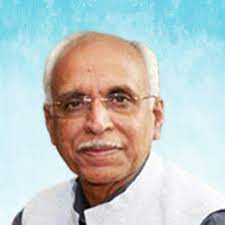Patients At the Centre
 Patient safety is not merely a buzzword or a checkbox on a healthcare provider’s list; it is alifeline, a non-negotiable priority, and a commitment to the well-being of those who entrusttheir health to the system. The critical issue of medical errors presents multifacetedchallenges, has far-reaching consequences, impacts patients and professionals alike, andcalls for comprehensive solutions. There is a need to acknowledge and address medicalerrors, foster a culture of patient-centric care, and forge a more dependable healthcaresystem where safety is paramount.…
Patient safety is not merely a buzzword or a checkbox on a healthcare provider’s list; it is alifeline, a non-negotiable priority, and a commitment to the well-being of those who entrusttheir health to the system. The critical issue of medical errors presents multifacetedchallenges, has far-reaching consequences, impacts patients and professionals alike, andcalls for comprehensive solutions. There is a need to acknowledge and address medicalerrors, foster a culture of patient-centric care, and forge a more dependable healthcaresystem where safety is paramount.…
By Dr Vijay Agarwal
The spectre of medical errors looms large in the realm of healthcare. Representing unintended and preventable adverse events that can occur during medical care and treatment, these errors are a matter of significant concern for both patients and healthcare professionals due to their far-reaching implications for patient safety and quality of healthcare.
The analysis of the origin, scale, and impact of these errors underscores the need for continuous efforts to enhance the safety of healthcare systems. It is astonishing to note that despite the United States having one of the world’s most advanced healthcare systems and an established accreditation system in place for over 80 years, preventable medical errors persist as the third leading cause of death. This issue’s magnitude in a country with such advanced medical practices raises concerns and offers vital lessons for India and other low and middle-income countries (LMICs).
The problem of medical errors is multifaceted, rooted in both systemic and cultural challenges. Addressing these errors necessitates comprehensive solutions, considering the various contributing factors as follows:
Complexity of Care
As medical technology and treatments advance, the complexity of healthcare delivery increases. More sophisticated interventions and devices introduce more potential points of failure, particularly when healthcare providers lack adequate training or when devices malfunction. For instance, the use of infusion pumps in hospitals, critical for precise medication delivery, can lead to errors if programmed incorrectly or due to mechanical malfunctions.
Volume and Pace
Hospitals and clinics often operate in high-pressure, chaotic environments with a significant patient load. Care providers may find themselves juggling multiple tasks concurrently, and patients may consult multiple specialists, leading to fragmented communication. For instance, a patient admitted for a cardiac issue might also have diabetes, and a lack of communication between specialists could lead to drug interactions that better communication could have prevented.
Economic Incentives
The fee-for-service model incentivises healthcare providers to see as many patients as possible and offer more services and procedures, sometimes irrespective of their necessity. This situation can compromise the quality of care and increase the likelihood of mistakes, such as patients undergoing unnecessary tests or procedures.
Cultural Barriers
In many healthcare settings, cultural norms discourage practitioners from admitting their mistakes. The fear of legal consequences, damage to their reputation, or punitive measures from their institution can deter healthcare professionals from reporting errors. This reluctance can lead to complications and prolonged hospitalisation for patients.

Systemic Issues
While accreditation ensures basic standards, it doesn’t necessarily guarantee the best practices. Healthcare professionals, especially nurses, often face high workloads and burnout, and administrative tasks can detract from the time and focus required for patient care. Such factors increase the potential for mistakes, such as nurses administering medication to the wrong patient or doctors missing critical details in a patient’s history.
In addition to the above factors, lack of infrastructure and inadequate or substandard trained manpower significantly contribute to medical errors in all LMIC countries, including India. Let’s delve into both aspects:
Lack of Infrastructure
Equipment & Technology: Outdated, faulty, or poorly maintained equipment can result in misdiagnoses, inadequate treatments, and complications. Up-to-date medical equipment is critical for patient care.
Facilities: Inadequate facilities can lead to errors. For example, a hospital lacking isolation rooms may struggle to control infections.
Information Systems: A poor or nonexistent health information system can lead to medication errors, lost patient data, and miscommunications among healthcare providers. The adoption of electronic health records (EHRs) and other health IT systems can mitigate some of these errors if correctly implemented and used.
Supply Chain: A lack of essential medicines, consumables, and other supplies can lead to compromised care and treatment delays, potentially resulting in harm.
Inadequate or Substandard Trained Manpower
Skill Deficiency: Medical personnel who aren’t adequately trained might lack the necessary skills or knowledge to diagnose and treat patients accurately.
Staff Shortage: When there aren’t enough trained professionals to handle the patient load, those on duty might become overworked, leading to fatigue and increased chances of errors.
Communication Breakdown: Inadequate training can also result in poor communication skills among healthcare teams. Miscommunication or lack of communication between professionals is a common cause of medical errors.
Continuous Education: Medicine is an ever-evolving field, and medical professionals need to stay updated with the latest guidelines, research, and techniques to provide the best care possible.
Both infrastructure and manpower are interlinked. Even with well-trained staff, inadequate infrastructure can make it challenging to deliver proper care. Conversely, top-tier equipment and facilities may not achieve their potential if operated by inadequately trained personnel. It’s worth noting that even in well-resourced settings, errors can and do occur. However, the risks are magnified in environments with lacking infrastructure and inadequately trained personnel. Therefore, improving these areas is crucial for enhancing patient safety and care quality.
Impact of Medical Errors
Patient Well-being: The most immediate and devastating impact of medical errors is on patients. These errors can lead to prolonged illness, additional pain, psychological trauma, long-term disability, or even death. The physical and emotional scars left by these errors can last a lifetime, affecting patients’ quality of life and trust in the healthcare system.
Healthcare Professionals: Medical errors also have profound implications for healthcare professionals. Being involved in an error can lead to personal grief, professional scrutiny, fear of litigation, loss of credibility, and what is often termed the “second victim” phenomenon, where caregivers themselves feel traumatised following an adverse event.
Trust in the Healthcare System: Repeated occurrences of medical errors and the publicity they receive can erode public trust in the healthcare system. A sceptical and fearful public may delay seeking medical attention, leading to exacerbated health problems and challenges for public health.
Economic and Resource Strain: Beyond direct medical costs, the broader societal impact includes lost productivity due to patient incapacity or early mortality. The additional resources spent to manage complications resulting from errors could have been channelled to other vital healthcare needs. The economic implications of medical errors are profound, leading to increased healthcare costs due to prolonged hospital stays, additional tests, and treatments for affected patients. Furthermore, medical malpractice claims add to the financial strain on the healthcare system.
The magnitude and impact of medical errors highlight a pressing need for systemic changes. It is essential to create a culture that prioritises patient safety, encourages reporting and learning from errors, and fosters an environment of continuous improvement. Implementing standardized protocols, investing in training, promoting interdisciplinary collaboration, and leveraging technology can play crucial roles in reducing the occurrence of these errors. Acknowledging the gravity of the issue is the first step, but actionable change, driven by both policy and grassroots efforts, is the key to genuinely safeguarding patients and restoring faith in the medical establishment.
Engaging Clinicians to Reduce Medical Errors
Involvement of clinicians in promoting patient safety is critical because they are at the forefront of patient care and can directly influence outcomes. Patient safety and safety for doctors and nurses are closely linked. Here are some strategies and steps to involve clinicians:
Education and Training: Provide training sessions on patient safety principles, best practices, and strategies. These should become part of the medical school curriculum.
Medical councils should offer CME credit points for attending safety seminars or training.
Engage Clinicians in Safety Committees: Ensure that safety committees have clinician representation from various specialties. Clinicians can provide insights into practical challenges and solutions in their respective fields.
Promote a Culture of Safety: Encourage an environment where clinicians can report errors without fear of punishment. Foster multidisciplinary collaboration on safety initiatives by involving physicians, nurses, pharmacists, therapists, and other healthcare professionals. Recognise and reward clinicians who demonstrate exemplary safety practices.
Feedback Mechanism: Implement a mechanism for clinicians to receive feedback on safety outcomes and performance, with the use of technology. Regularly update them on the status of safety initiatives and their impact on patient outcomes.
Create Safety Champions: Identify and support clinicians who are passionate about patient safety. Offer them roles as safety champions or mentors to lead and guide their peers.
Develop Safety Protocols and Checklists: Involve clinicians in the development and refinement of safety protocols and checklists. Their insights from the front lines are invaluable.
Facilitate Research and Quality Improvement Projects: Encourage clinicians to conduct or participate in research projects centred on patient safety. Provide them with the resources and mentorship to execute these projects.
Support Work-life Balance: Recognise that fatigued or overworked clinicians are more likely to make errors. Foster an environment that promotes a healthy work-life balance and offers support when needed.
Regularly Review and Update Protocols: Engage clinicians in periodic reviews of protocols, guidelines, and procedures to ensure they remain up-to-date with the latest evidence and best practices.
Patient and Family Engagement: Collaborate with clinicians to develop strategies for engaging patients and their families in safety initiatives, as they offer unique and valuable perspectives.
By incorporating these strategies and actively seeking input and collaboration from clinicians, healthcare organisations can create a robust framework for patient safety that benefits both patients and healthcare providers.
Engaging Patients to Reduce Medical Errors: This year, World Patient Safety Day (WPSD) emphasises the importance of engaging with patients. When patients are actively involved in their care journey, it leads to better outcomes and enhanced trust. Patients are not just recipients of care; they are active partners in the process.
This aligns perfectly with the idea of patient-centric care—an approach that places the patient’s needs, experiences, and voices at the centre of every decision.
We at CAHO are proud to have sensitised several healthcare organisations to establish Patients Advisory Councils (PACs). These councils provide a structured and constructive way to elevate the patient’s voice.
We have also helped create the Patients for Patient Safety Foundation (PFPSF) to provide an independent forum to collate and represent the patient’s perspective. CAHO has released guidelines for setting up PACs on the occasion of World Patient Safety Day.
Role of Accreditation
Achieving accreditation is undoubtedly a significant accomplishment for any healthcare organisation. It signifies that you’ve met strict standards and are committed to providing quality care. However, it’s crucial to see this as a starting line, not the finish. Accreditation signals the beginning of a continuous journey to improve, innovate, and excel. Compliance with accreditation should be the beginning of developing a culture of safety within an organisation.
(The author is President, CAHO – Consortium of Accredited Healthcare Organisations)

